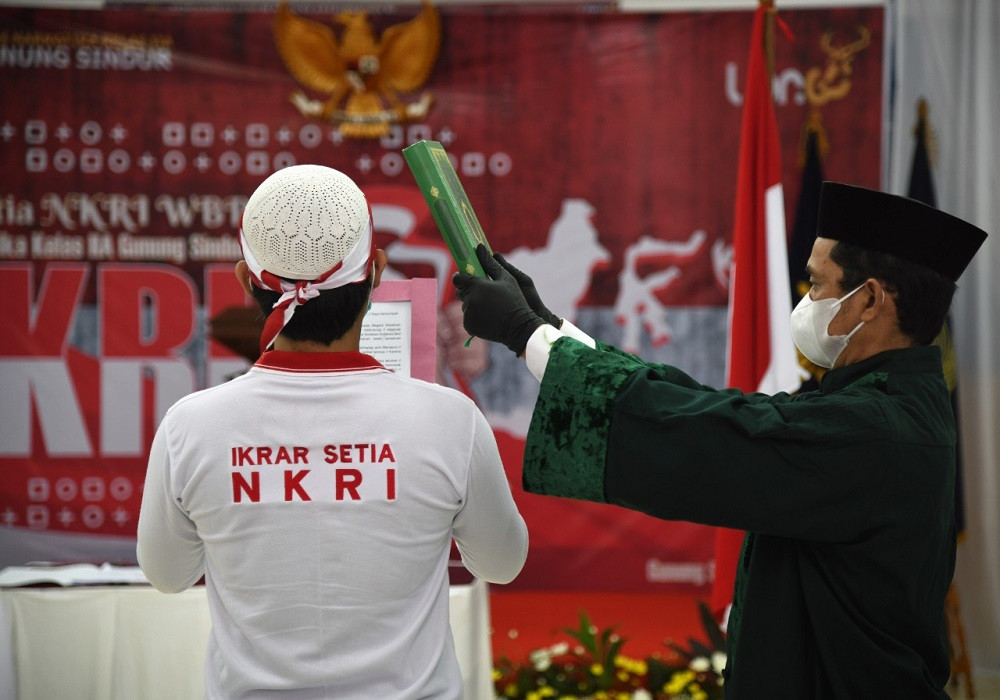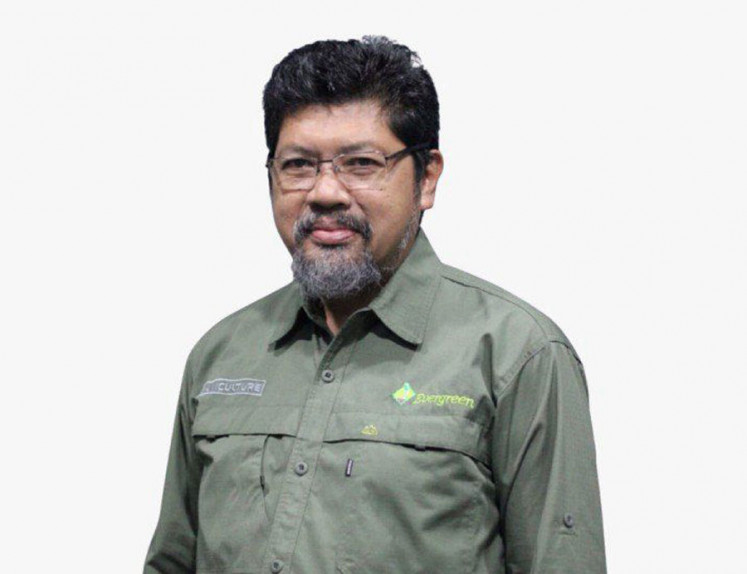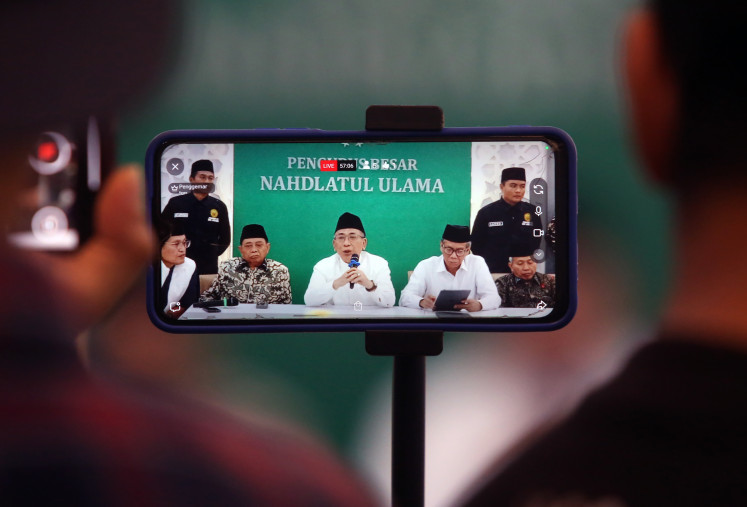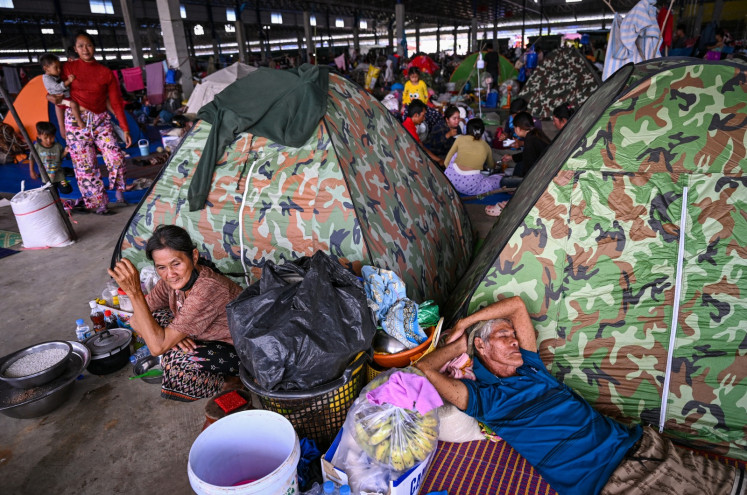Popular Reads
Top Results
Can't find what you're looking for?
View all search resultsPopular Reads
Top Results
Can't find what you're looking for?
View all search resultsRehabilitating terrorist prisoners in Southeast Asia: From programs to processes
Trained and experienced wali mingle in the yard and engage extremist inmates on a daily basis, gradually breaking down barriers through frequent interactions and quietly noting any perceived changes in behavior or attitude.
Change text size
Gift Premium Articles
to Anyone
W
hen a former prisoner tragically detonated his suicide vest in a Bandung, West Java, police station last December, attention once again returned to programs aimed at reforming violent extremist inmates.
Despite sporadic attacks, Southeast Asian nations have done remarkably well in suppressing the threat of terrorism since an Islamic State (IS)-inspired resurgence in the mid-2010s. But as more and more detained suspects were successfully prosecuted, questions remained over their possible rehabilitation.
Experts have calculated violent extremist recidivism in Indonesia at just over 10 percent, which is very low compared with other crimes, but still concerning given the implications of terrorism. Following each attack by a reoffender, observers rightly ask whether so-called de-radicalization programs “actually work”.
While evaluating certain initiatives should be an ongoing task, a more useful inquiry would look at the whole system of processes surrounding each case, and the range of stakeholders ideally involved, from an individual’s initial arrest to their inevitable transition back into society.
In March 2023, the European Union Delegation in Indonesia partnered with ASEAN and the National Counterterrorism Agency (BNPT) to hold a regional workshop on this set of issues in Bali, which explored processes and practices at length.
Supported by the EU-backed project, Enhancing Security Cooperation in and with Asia (ESIWA) and in collaboration with Hedayah, the workshop involved an active cast of experts and practitioners from regional government agencies, civil society organizations, and the research community. Senior prison and parole officers from the German and Latvian corrections systems also participated, adding valuable perspective and texture to discussions.
Rehabilitating and reintegrating violent extremists has become an important background issue in a diverse range of nations. Context is crucial for aspects of each approach, but many of the challenges involved are also more-or-less present for each government concerned.
Common obstacles include suboptimal infrastructure; balancing the need for individualized prisoner attention with the realities of available resources; applicable training and capacity among frontline practitioners; and the difficulty of risk and needs assessments within data-sensitive environments.
Faced with such challenges, ASEAN member states have certainly made progress in recent years. The Philippines has almost halved its prison overcrowding rate over the past five years, and the nation’s key prison bureaus are now establishing centers dedicated to preventing radicalization and recidivism.
Singapore is working with smaller numbers of extremists than its larger neighbors, and its effective multi-faceted approach to managing detentions is probably a good example of the resources required for individually tailored interventions. Less reliant on resources, however, is stakeholder coordination, which the Singapore model also seems to exemplify.
Still, practitioners are conscious that counseling and engagement strategies need to observe evolving dynamics and potentially adapt. For example, the concerning recent spate of young “self-radicalized” teenagers detained in Singapore for displaying extremist ambitions may require renewed thinking and innovation.
Malaysia has also established robust procedures for the management of violent extremists through its criminal justice system. A rehabilitation model for detainees was instituted under the 2015 Anti-Terrorism Act (POTA), which incorporated psychological, ideological and security risk assessments in what is described as a holistic approach to extremist rehabilitation.
Well-designed, nuanced strategies are clearly ideal, but again, they also tend to stretch human resources. What is effective in theory may not always be possible in practice, where ongoing specialized expertise is required. Ensuring sustained financial support may also depend on current threat perceptions, as longer-term prevention commitments can be eroded by the success of more immediate prosecutions, if it feels like the problem has gone away.
Indonesia has had a progressing system of rehabilitating and reintegrating violent extremists since the late 2000s. Perhaps the most promising recent development is the increasing capacity among prisoner-relation officers known as wali (or pamong). Trained and experienced wali mingle in the yard and engage extremist inmates on a daily basis, gradually breaking down barriers through frequent interactions and quietly noting any perceived changes in behavior or attitude.
Among prisoners who refuse communication with the government, officers in maximum-security facilities enlist cooperative extremist inmates to soften the attitudes of their more hardline associates and create openings for wali and others to begin establishing relationships. These piecemeal social exchanges do not receive the attention of more focused de-radicalization programs but laying the groundwork for dedicated interventions is an essential phase of the process.
Involving families is also crucial, through material support to avoid any reliance on the extremist movement, but also for reducing community stigmatization and encouraging inmates to focus on constructive goals and move on with their lives. The BNPT has been working with families in this way for several years. The agency now runs a “safe-house” in Cilacap, Central Java, to accommodate people visiting their relatives in prisons on nearby Nusakambangan Island.
To be sure, rehabilitating and reintegrating violent extremists should be considered an integrated process of engagement and management rather than a series of programs. Agencies and practitioners involved in this field largely recognize that rehabilitating extremists must be a multi-stakeholder, multi-disciplinary endeavor, but many would also say that effective coordination is easier on paper than in practice.
Risk and needs assessments are a good example. Dossiers on individuals would have much greater value if compiled collaboratively among relevant agencies, but the associated information is highly sensitive and not always shared with frontline practitioners who require as complete a picture as possible.
These challenges mostly exist wherever similar processes are implemented. Southeast Asian governments have made genuine progress when it comes to recognizing contributions from a variety of stakeholders, including civil society organizations, many of which have deep knowledge and expertise on violent extremism and its prevention, as well as grassroots credibility and connections.
As national action plans on preventing violent extremism develop in ASEAN nations, the roles and involvement of all applicable stakeholders in the rehabilitation process are being clarified and institutionalized, from police to prisons, parole to social service provision, and from central and local government to civil society and neighborhood associations.
Further headway will depend on securing these synergies and incentivizing authentic collaboration among every actor with a role to play in the process.
***
The writer is the coordinator for Counterterrorism and P/CVE at the ESIWA (Enhancing Security Cooperation in and With Asia) project, and adjunct fellow at the Centre of Excellence for National Security at RSIS in Singapore. The views expressed are his own.











